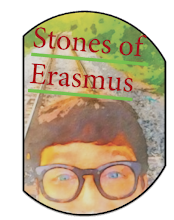 | |
| Storm-Tossed and Star Crossed: Paris and Helen's Epic Journey to Troy |
Hi, I’m Greig — welcome! Here you’ll find sharp writing, creative ideas, and standout resources for teaching, thinking, making, and dreaming in the middle and high school ELA and Humanities classroom (Grades 6–12).
9.9.23
Unveiling Mythology to Teens: Insights from the Humanities Classroom
 I am an educator and a writer. I was born in Louisiana and I now live in the Big Apple. My heart beats to the rhythm of "Ain't No Place to Pee on Mardi Gras Day". My style is of the hot sauce variety. I love philosophy sprinkles and a hot cup of café au lait.
I am an educator and a writer. I was born in Louisiana and I now live in the Big Apple. My heart beats to the rhythm of "Ain't No Place to Pee on Mardi Gras Day". My style is of the hot sauce variety. I love philosophy sprinkles and a hot cup of café au lait.
21.1.10
The Rage of Achilles - A Review of the First Book of Homer's Iliad
"Rage, goddess, sing of the rage of Achilles" (1.1)
A Review of Book One of Homer's Iliad
In Medias Res
The story of Achilles begins in medias res, nine years into a battle between the Trojans and the Greeks. The poet does not give historical background for the war or its duration, assuming readers already know the context. For more on the Trojan War's origins, students often consult Edith Hamilton's classic Mythology or read about the Judgment of Paris. There is even archaeological evidence that Troy may have existed in the Bronze Age.
The poet is silent about much of the background, focusing instead on mortals and immortals. The Iliad could well be called The Rage of Achilles, as anger and loss thread through the poem. The muses, invoked for inspiration, act as furies in the poem's opening: "Rage, goddess."
The god quaked with rage (1.54)
The epic traces the genealogy of Achilles’s resentment, beginning with Apollo’s anger at Agamemnon for refusing to return his slave girl, Chryseis. Apollo’s wrath brings a plague to the Greek camp. The soldiers want to return home, but Agamemnon refuses to give in, even at the cost of his men’s lives—echoing the selfishness of a corporate boss clinging to privilege.
A Dispute Among Children
Book One centers on a childish dispute between Agamemnon and Achilles. When Achilles protests Agamemnon’s selfishness, Agamemnon retaliates by seizing Achilles’s slave girl, Briseis. Achilles withdraws from battle, vowing not to fight, comforted by Patroclus and Athena.
The Boy with Fiery Hair (1.232)
Achilles is depicted as a youth with fiery red hair—a symbol of his rage. Feeling entitled and above others, he sees himself as nearly divine. When insulted, he appeals to his mother, the sea nymph Thetis, who promises to ask Zeus to avenge him.
Thetis, the Old Man of the Sea’s Daughter
In a poignant scene, Achilles walks the shore, praying to Thetis for vengeance and honor. His tragic flaw is not recognizing his own mortality.
Uncontrollable Laughter Broke from the Gods (1.721)
The book ends with the gods laughing at the mortals. Is it schadenfreude? Do the gods laugh at Achilles, at mortals, or at our delusions?
PDF copy for printing
 I am an educator and a writer. I was born in Louisiana and I now live in the Big Apple. My heart beats to the rhythm of "Ain't No Place to Pee on Mardi Gras Day". My style is of the hot sauce variety. I love philosophy sprinkles and a hot cup of café au lait.
I am an educator and a writer. I was born in Louisiana and I now live in the Big Apple. My heart beats to the rhythm of "Ain't No Place to Pee on Mardi Gras Day". My style is of the hot sauce variety. I love philosophy sprinkles and a hot cup of café au lait.
